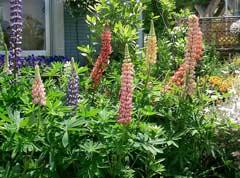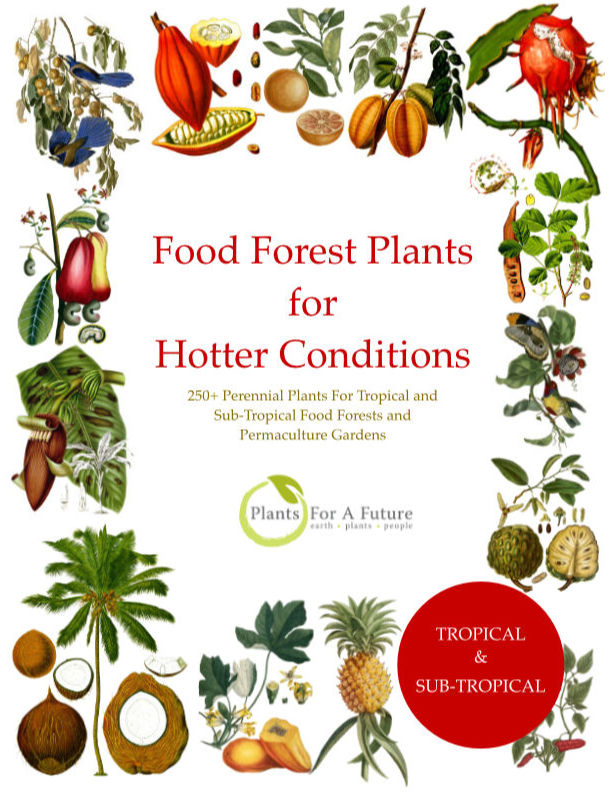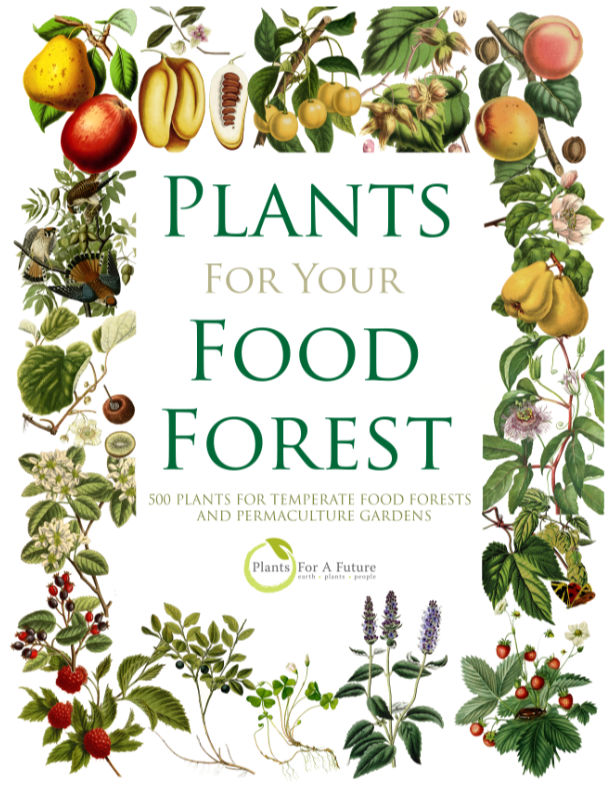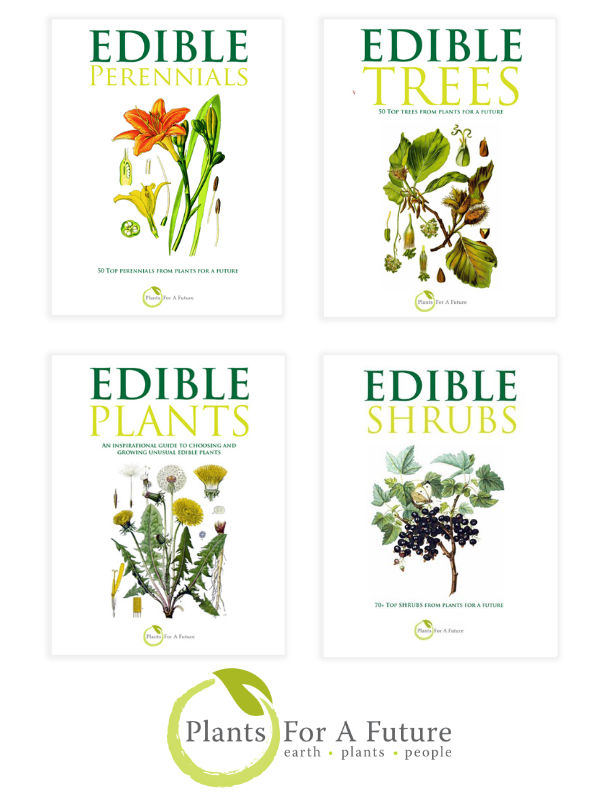 |
|
http://commons.wikimedia.org/wiki/User:KENPEI |
 |
|
Translate this page:
Summary
Many Lupinus species are nitrogen-fixers, helping improve soil fertility. Some Lupinus species are adapted to dry conditions, have drought tolerance, and tolerate poor soil. Lupines are especially attractive to bees and butterflies. The flowers produce abundant nectar and pollen, providing a valuable food source. Birds are attracted to lupines for the seeds, which ripen in pods later in the season. Large-leaved lupine (L. polyphyllus) is not generally considered edible; the seed contains high alkaloid levels toxic if consumed. The annual White Lupin (L. albus) and Yellow Lupin (L. luteus) seeds must be appropriately processed (soaked and boiled) to reduce alkaloid content before consumption.
Harvesting: Seeds are harvested in late summer to early autumn when the pods have dried but before they shatter. Bloom Color: Blue, Orange, Pink, Purple, Red, White, Yellow. Main Bloom Time: Early summer, Late spring. Form: Upright or erect.
Physical Characteristics

 Lupinus polyphyllus is a PERENNIAL growing to 1.5 m (5ft) at a medium rate.
Lupinus polyphyllus is a PERENNIAL growing to 1.5 m (5ft) at a medium rate.
See above for USDA hardiness. It is hardy to UK zone 3. It is in flower from July to August, and the seeds ripen from July to October. The species is hermaphrodite (has both male and female organs) and is pollinated by Bees. The plant is self-fertile.
It can fix Nitrogen.
It is noted for attracting wildlife.
Suitable for: light (sandy), medium (loamy) and heavy (clay) soils, prefers well-drained soil and can grow in nutritionally poor soil. Suitable pH: mildly acid and neutral soils and can grow in very acid soils.
It cannot grow in the shade. It prefers moist soil and can tolerate drought. The plant can tolerates strong winds but not maritime exposure.
UK Hardiness Map
US Hardiness Map
Synonyms
Plant Habitats
Cultivated Beds;
Edible Uses
Root - raw or cooked[257].
References More on Edible Uses
Medicinal Uses
Plants For A Future can not take any responsibility for any adverse effects from the use of plants. Always seek advice from a professional before using a plant medicinally.
A decoction of the plant has been used as a tonic[257].
References More on Medicinal Uses
The Bookshop: Edible Plant Books
Our Latest books on Perennial Plants For Food Forests and Permaculture Gardens in paperback or digital formats.

Edible Tropical Plants
Food Forest Plants for Hotter Conditions: 250+ Plants For Tropical Food Forests & Permaculture Gardens.
More

Edible Temperate Plants
Plants for Your Food Forest: 500 Plants for Temperate Food Forests & Permaculture Gardens.
More

More Books
PFAF have eight books available in paperback and digital formats. Browse the shop for more information.
Shop Now
Other Uses
Agroforestry uses:
This species is a nitrogen fixer, improving soil fertility. It can be used as a cover crop, erosion control, or to enhance biodiversity in agroforestry systems.
Landscape Uses: Border, Container, Ground cover, Massing, Specimen, Woodland garden. Special Features: Attracts birds, Attractive foliage, North American native, Naturalizing. Attracts butterflies, Suitable for cut flowers, Suitable for dried flowers. Nitrogen fixer. 1. Nectary - Flowers rich in nectar and pollen:
Yes – Big-Leaf Lupin flowers are rich in nectar and are attractive to various pollinators, including bees and butterflies.
2. Wildlife - Food (Fruit, Seeds, Leaf litter, Shelter, Nesting, Roosting):
Yes, the seeds of Lupinus polyphyllus are edible (after proper preparation to remove toxins) and can feed wildlife. The foliage can provide some shelter, though it is not dense enough to serve as a primary nesting or roosting habitat.
3. Invertebrate Shelter (Overwintering sites, Leaf litter, Groundcover):
Yes – The plant can provide some cover and shelter for invertebrates, and its leaf litter may serve as a habitat. It can also help improve soil structure and support beneficial insects.
4. Pest Confuser (Smell):
No – While the plant may have a pleasant fragrance, it is not specifically known to confuse pests through its scent.
Special Uses
Carbon Farming Dynamic accumulator Nitrogen Fixer
References More on Other Uses
Cultivation details
Agroforestry Services: Nitrogen Management: Standard New Crop Staple Crop: Protein
An easily grown plant, succeeding in any moderately good soil in a sunny position[1, 200]. It strongly dislikes excessive winter wet[1]. Requires an acid to neutral soil[200]. Succeeds in poor soils[60]. Plants can be naturalized in the wild garden, especially on stream banks and for flowering above rough grass, where they may be short-lived but will self-seed[200]. Plants dislike root disturbance. There are some named varieties, selected for their ornamental value[200]. This species has a symbiotic relationship with certain soil bacteria, these bacteria form nodules on the roots and fix atmospheric nitrogen. Some of this nitrogen is utilized by the growing plant but some can also be used by other plants growing nearby[200]. Depending on conditions, big-leaf lupin has a moderate growth rate, typically reaching maturity within 1-2 years. Once established, it can grow to heights of 3-4 feet. Seeds are typically harvested in late summer to early autumn when the pods have dried but before they shatter.
Big-leaf Lupin flowers from late spring to early summer. Big-Leaf Lupin is typically self-fertile, allowing for pollination within the same flower.
Carbon Farming
-
Agroforestry Services: Nitrogen
Plants that contribute to nitrogen fixation include the legume family – Fabaceae.
-
Management: Standard
Plants grow to their standard height. Harvest fruit, seeds, or other products. Non-Destructive management systems.
-
New Crop
Most new crops were important wild plants until recently, although some are the result of hybridization. They have been developed in the last few, decades. What they have in common is that they are currently cultivated by farmers. Examples include baobab, argan, and buffalo gourd.
-
Staple Crop: Protein
(16+ percent protein, 0-15 percent oil). Annuals include beans, chickpeas, lentils, cowpeas, and pigeon peas. Perennials include perennial beans, nuts, leaf protein concentrates, and edible milks.
References Carbon Farming Information and Carbon Sequestration Information
Temperature Converter
Type a value in the Celsius field to convert the value to Fahrenheit:
Fahrenheit:
The PFAF Bookshop
Plants For A Future have a number of books available in paperback and digital form. Book titles include Edible Plants, Edible Perennials, Edible Trees,Edible Shrubs, Woodland Gardening, and Temperate Food Forest Plants. Our new book is Food Forest Plants For Hotter Conditions (Tropical and Sub-Tropical).
Shop Now
Plant Propagation
Pre-soak the seed for 24 hours in warm water and then sow in early spring in a greenhouse[1, 200]. Germination should take place within a couple of weeks. When they are large enough to handle, prick the seedlings out into individual pots and plant them out in the summer. It should also be possible to sow the seed in situ in mid spring. It might be necessary to protect the sowing from mice. Division in March. Difficult. Basal cuttings, April in a cold frame. Harvest the shoots when they are about 10cm long with plenty of underground stem. Pot them up into individual pots and keep them in light shade in a cold frame or greenhouse until they are rooting well. Plant them out in the summer.
Other Names
If available other names are mentioned here
Native Range
NORTHERN AMERICA: United States (Alaska, Colorado (west), Idaho, Montana (west), Oregon (west), Washington (west), Wyoming (west), California (north), Nevada, Utah), Canada (Alberta, British Columbia)
Weed Potential
Right plant wrong place. We are currently updating this section.
Please note that a plant may be invasive in one area but may not in your area so it's worth checking.
Conservation Status
IUCN Red List of Threatened Plants Status :

Growth: S = slow M = medium F = fast. Soil: L = light (sandy) M = medium H = heavy (clay). pH: A = acid N = neutral B = basic (alkaline). Shade: F = full shade S = semi-shade N = no shade. Moisture: D = dry M = Moist We = wet Wa = water.
Now available:
Food Forest Plants for Mediterranean Conditions
350+ Perennial Plants For Mediterranean and Drier Food Forests and Permaculture Gardens.
[Paperback and eBook]
This is the third in Plants For A Future's series of plant guides for food forests tailored to
specific climate zones. Following volumes on temperate and tropical ecosystems, this book focuses
on species suited to Mediterranean conditions—regions with hot, dry summers and cool, wet winters,
often facing the added challenge of climate change.
Read More
Expert comment
Author
Lindl.
Botanical References
17200
Links / References
For a list of references used on this page please go here
Readers comment